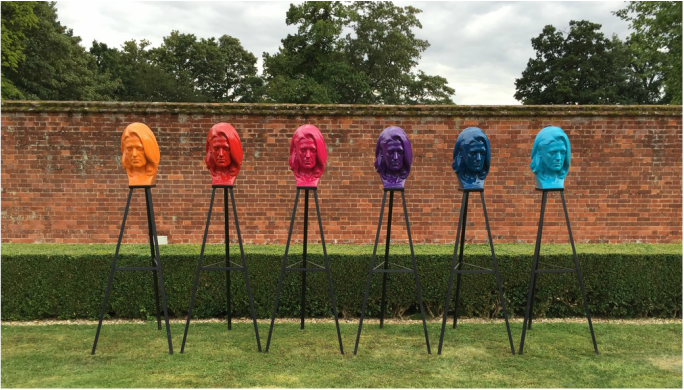 Masquerade (detail) Masquerade (detail) Finally finished my Masters in Sculptural Practice, what a wonderful two years, here is a summary of that experience: Critical reflection MA Sculptural Practice On 23 June 1981, it was my sixteenth birthday and the last day of senior school. It was then, the happiest day of my life. I struggled academically, leaving with 3 CSE’s in art, home economics and biology. If I had known then I was dyslexic and not thick, I may have enjoyed those 5 years a little more. 34 years later and look at me now! I have just finished a Masters. Happy? oh yes but for totally different reasons. Happy for a sense of achievement I never imagined that day I walked out of school. Happy for my ability to learn and keep learning and yes I can now write ‘art bollocks’ – well that’s how it sounded to me before I came to Colchester Institute in 2008 to begin my BA. I began this Masters in Sculptural Practice to underpin my work with a deeper sense of meaning and to justify my notions in an academic written language, supported by theory and an extended knowledge of the subject of portrait sculpture. My original proposal was to research iconic self-portraits to understand the principles underpinning their production and reception such as composition, eyes and surface decoration. I now know that what I actually should have said (to put this into the language of an aspiring academic) that I am studying the ‘Academic habit and hierarchy of composition-contour-chiaroscuro-colour’ Batchelor, D. (2000) in that order. Here I discovered how colour and tone can alter perception. I now look at colour in a completely different light thanks to the publication Chromophobia by David Batchelor. I don’t see colour at the bottom of the institutional pecking order. I see it at the top. I chose to use myself as the model, mainly for ease and reliability rather than some narcissistic desire to look at myself or find myself. However, when scrutinising your own features over and over again, it can’t be helped that it will become self-indulgent and self-obsessed – it comes with the territory. But using myself gave me a grounding theory to base my research on – the theory of looking, looking at one’s self and seeing, seeing in the visual sense and seeing in the psychological sense.  Transition Transition This underpinning gave me the knowledge to subvert the traditional idea of commemorative portrait sculpture and to consider a more abstract and conceptual method of portraying the self. Still relying on a mimetic representation of myself as the point of departure, I nurtured and manipulated the material rather that do a quick life cast, that would have relied on others to help me, then putting into question authorship of the self-portrait. No, I carefully measured and sculpted the clay, a metaphor for social nurturing. I then moulded and mummified - a protective shielding of deceit perhaps. I fired the work then smashed the work – returning to a concept I had explored before. For me, one of my most successful pieces, and the one I spent hours pondering over, (in fact more hours of pondering than making) is Transition. It is about a previous state of mind that changed the direction of my life forever. I would not be sitting here now, writing this summary if it wasn’t for that time in my life. The selected pieces for the final exhibition do not stand alone as individual objects. For me they have become an installation with sound, performance and digital film coming together to fill the gallery space and immerse the spectator in a very personal monologue I am very excited about the future, sound, film and installation is a direction I wish to continue with. My internship at the Henry Moore institute has already given me new contacts with more doors to open. I shall be returning at some point to discuss the research.
Now that I have a focused body of work I shall consider a solo exhibition somewhere in London. My aim is to have a London gallery represent my work so I need to get out there. The group dynamics have been perfect, we are all doing our own thing but don’t hold back on peer critiques. Terry, as usual has been passionately supportive and I thank him for that. Pete’s input helped immensely in defining a focused path and eliminating the drivel. And Martin Bridges, again, can’t praise him enough for his help.
3 Comments
|
Billie BondAward winning figurative sculptor questioning the lives of everyday people Archives
July 2017
|


 RSS Feed
RSS Feed